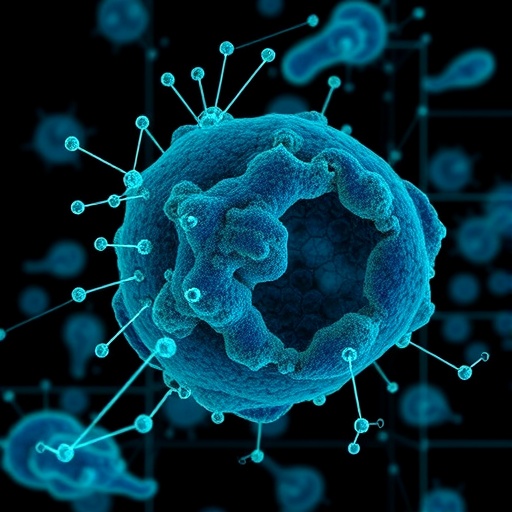Metastasis, the spread of cancer cells from a primary tumour to different organs, is responsible for more than 90% of deaths due to cancer. Current treatments such as chemotherapy or radiotherapy are effective against primary tumours, but they cannot stop or kill the circulating cancer cells in the bloodstream. This means that understanding how cancer cells start to metastasise is crucial for developing new anti-metastasis therapies.
Now, researchers at Rice University (including myself) have deciphered how a network of genes allows cancer cells to “decide” when to metastasise, thus opening up new therapeutic avenues.
Cancer cells in a primary tumour are usually fixed and immovable (sessile). However, if some of the cancer cells from the primary tumour start to invade neighbouring healthy tissue and enter the bloodstream to spread to different organs, it is bad news for the patient, because each one of these circulating cancer cells is capable of giving rise to a new tumour elsewhere in the body. Every cancer cell in the primary tumour either stays bound to its neighbours or metastasises. This decision is taken by a network of genes that functions as a switch, allowing each cell to either be “on” (migrating) or “off” (not migrating).
We discovered that this genetic switch also allows for a third choice that lies somewhere between “on” and “off”: cancer cells can move collectively, or migrate while still bound to their neighbours. These findings are crucial, because they underline a striking similarity in the collective cell migration of cancer cells and the kind of cell migration seen during wound healing.
This means that anti-metastasis strategies must be developed while keeping in mind that they do not inhibit wound healing. Even more care should be taken as the wound-healing drugs should not promote metastasis, in case a tumour is present.
Switch to spread
After circulating, cancer cells exit the bloodstream to settle at a distant organ. They switch back to being sessile and start growing another tumour at that organ. We show that moving collectively is advantageous to the cancer cells, because it is much easier for collectively moving cells rather than individually moving cells to switch back to a sessile state at a distant organ and start growing another tumour.
The metastasis “decision switch” consists of two specialised pairs of proteins, namely (SNAIL and microRNA34) and (ZEB and microRNA200). Both pairs are “mutually inhibitory”, with each partner in a pair inhibiting the production of the other. Imagine two people, A and B, who hate each other and refuse to attend a party where the other is present. Therefore, usually, in such pairs, one gets only two possibilities: either only A attends or only B attends – the concentration of the first protein is high and the second low, or vice-versa. In sessile cancer cells, the concentration of microRNAs is higher and that of ZEB and SNAIL low, and vice-versa for individually migrating cells.
The simple explanation then would be that these mutually inhibitory pairs behave as a switch, allowing for an “on” and an “off” state. However, our study shows that they actually behave as two switches, allowing for three possibilities. This they do because depending on the strength of inhibition (or degree of hatred) and other regulations (such as self-activation), such pairs can behave differently from being a usual two-way switch.
SNAIL and microRNA34 inhibit each other weakly. As a result, they both can be present at the same time (without driving any of them to extinction), with their exact amounts being decided by interactions with other genes – allowing three cases – A present, B absent; B present, A absent; and both A and B present under certain conditions.
It is the dance of these two pairs of proteins which allows cancer cells to have a three-way switch, rather than the previously thought two-way switch. Since this decision-making switch is common across cancers that originate in breast, prostate, colon, or pancreas, the results are potentially of importance for more than 60% of all cancer patients.
This process is remarkably similar to the body’s repair mechanism, where group of skin cells move to close a surface wound. Their collective movement allows the wound to be healed. Using this strategy often means they gain the best of both worlds – cell-cell cooperation to spread and uncontrolled growth. Knowing this process can enable us to better tackle metastasis, one of the most critical areas of cancer research and future treatment.
Story Source:
The above story is based on materials provided by The conversation, Mohit Kumar Jolly.





